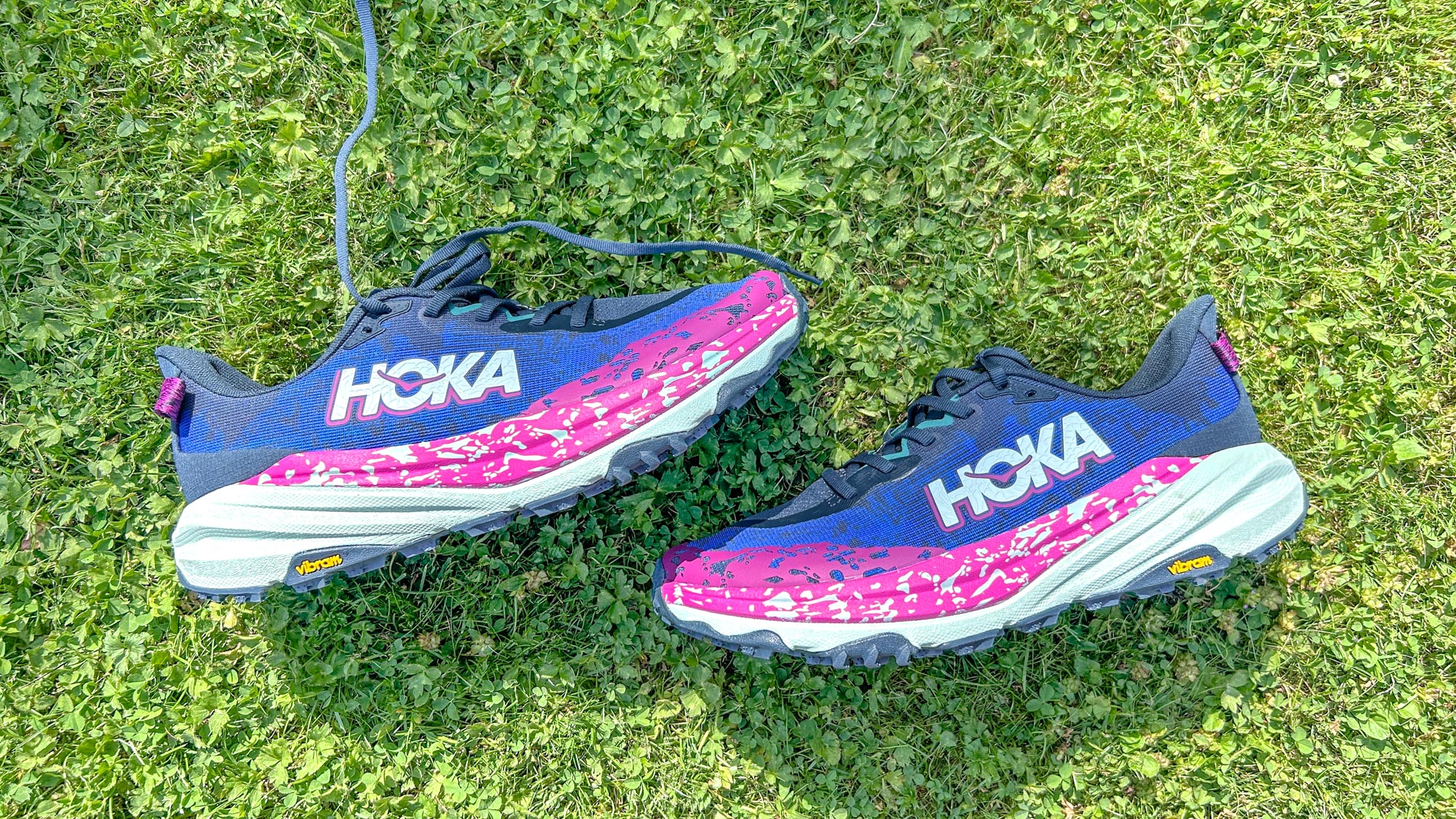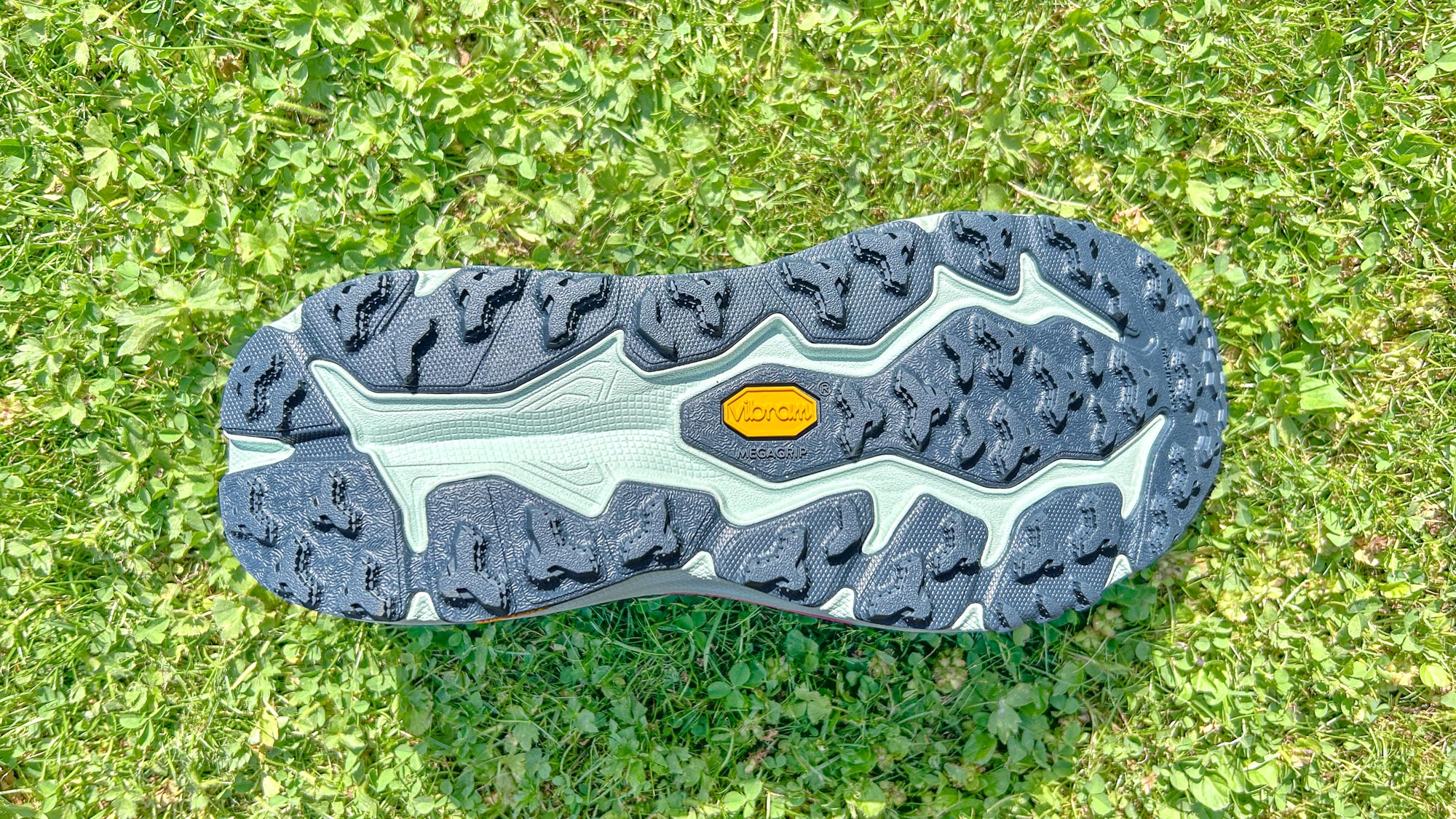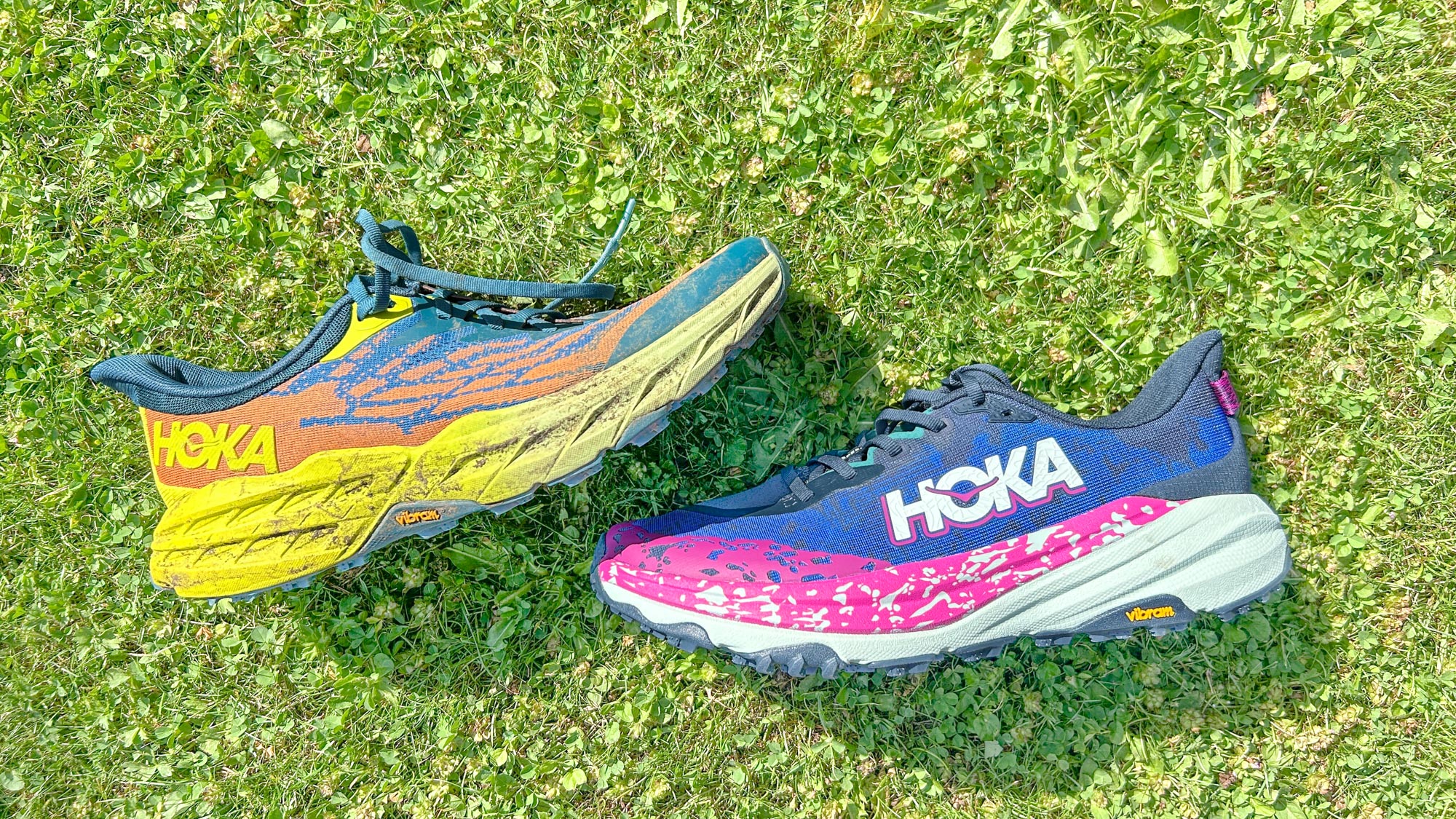Tom's Guide Verdict
The Hoka Speedgoat 6 is the most versatile trail-running shoe I’ve tested in 2024 and an easy one to recommend to any runners who need a shoe to take on a variety of off-road adventures. The only real downside to the shoe is that it’s similar to the Speedgoat 5, which you might be able to get for less in a sale.
Pros
- +
Comfortable, versatile ride
- +
Reliable grip across most terrains
- +
Lightweight
Cons
- -
Similar to Speedgoat 5
- -
Not as light as some trail racers
- -
Toe-box isn’t very wide
Why you can trust Tom's Guide
The Hoka Speedgoat 6 is one of the best trail-running shoes available, and the shoe I’d recommend to most runners looking for a versatile off-road option. It’s a comfortable and lightweight shoe for running any distance, from short park loops to epic ultramarathons, and the outsole delivers reliable traction on most surfaces.
Unless you’re in the market for a pure trail racer like the Hoka Tecton X3 or Adidas Terrex Agravic Speed Ultra, the Speedgoat 6 is the best generalist trail shoe out there, standing out even when compared to other excellent shoes I’ve tried like the Saucony Peregrine 14 and Merrell Agility Peak 5.
Perhaps the strongest competition actually comes from the Hoka Speedgoat 5, which is similar to the new shoe and a regular in sales now the Speedgoat 6 has come out. In my Hoka Speedgoat 6 review I’ll compare it to its predecessor and explain why I think it’s the top pick for most trail runners.
Hoka Speedgoat 6 review: price and availability

The Hoka Speedgoat 6 launched in July 2024 and costs $155 in the U.S. and £140 in the U.K., the same price as the Speedgoat 5. Along with the standard model of the shoe, there’s a waterproof version — the Hoka Speedgoat 6 GTX, which is $170 — and the Speedgoat 6 Mid GTX mid boot, which is $180.
Hoka Speedgoat 6 review: design and fit
The Hoka Speedgoat 6 is currently available in six colors in the men’s and women’s shoe, with two widths on offer for most of those colors – standard and wide. Like many Hoka shoes, the Speedgoat 6 does have quite a narrow fit in the toe box and if you like more room, especially with ultramarathons in mind, going up a half size might be an option. I was fine in my normal size, but I have a narrow foot.
At 9.9oz in my men’s US 9.5, the Speedgoat 6 is 0.6oz lighter than the Speedgoat 5 in my size, with the drop in weight being partly down to Hoka tweaking the midsole material. The stack height is the same at 40mm at the heel and 35mm at the forefoot in the men’s shoe, and 38mm dropping to 33mm in the women’s for a 5mm offset in both.
Upper

The Speedgoat 6 has a woven textile upper that has some padding around the heel and a gusseted tongue that hugs and holds the foot securely. A toe bumper protects the front of your foot, and an internal heel counter adds extra support at the back.
I found the upper was comfortable and held my foot in place even when pounding down hills and running along twisting, single-path trails. The upper has been updated compared with the Speedgoat 5 to create a more comfortable and secure fit, but I didn’t have any concerns with the fit of the older shoe and didn’t notice a major difference.
Midsole
The Speedgoat 6’s midsole is made from CMEVA (compression molded plastic), like the Speedgoat 5’s, but the material has been updated to be a little firmer, lighter and more responsive with the new shoe. It’s still a comfortable midsole, and I didn’t notice a huge change in feel compared with the 5, but the lighter design and extra firmness is a benefit for faster trail runs.
Like most Hoka shoes the Speedgoat 6 has a rockered design and this is most notable when running on even and firmer trails. The ride is enjoyably smooth and comfortable and you don’t really notice the shoe on your foot, which is always a good sign for me.
Outsole

The Hoka Speedgoat 6 has a Vibram Megagrip outsole with Traction Lugs, which have little spikes all over them to increase grip on soft terrain in particular. The 5mm lugs are designed to grip on a wide range of trails and I found the traction to be reliable on any ground I tackled in the shoe. I’ve also not seen any wear and tear on the rubber after 40 miles of running.
Hoka Speedgoat 6 review: running performance
I took the Hoka Speedgoat 6 with me on holilday in Gran Canaria, Spain, where I was able to test it on hard, rocky trails, as well as using it in my local forest on a mix of mud, grass and well-groomed forest paths.
As with the Speedgoat 5, the standout feature of the Speedgoat 6 is its versatility. The Vibram outsole has lugs that bite into soft ground but are still broad and sticky enough to be comfortable and grip well when you’re on rockier terrain. The shoe is also comfortable for long stints of road running, which you might face as part of ultramarathons, and it’s a good road-to-trail option as well.
I’d say the only terrain where I’d prefer a more specialized outsole is on deep mud, where a trail shoe with deeper 8mm lugs would be better, and those who stick entirely to hard and smooth trails might find a shoe with shallower, broader lugs more comfortable.
The foam in the midsole is firm enough to make the shoe feel stable on uneven ground, but is comfortable enough for long runs, with the rocker design helping to move you from heel-to-toe. I did several hilly runs on hard ground in Gran Canaria and felt confident speeding down hills and along narrow trails.
It’s not as comfortable and protective as some trail shoes with higher stacks though, especially the likes of the Hoka Tecton X3 which have softer foams in the midsole. I could feel how beat up my quads were after a hilly run in the Speedgoat, but the upside of the firmer material is that the shoe is more stable. Unless you’re a very experienced trail runner I’d opt for the more reliable ride of the Speedgoat on tricky trails over the soft and springy Tecton.
Compared to the Speedgoat 5 the ride is a little firmer, lighter and more responsive, which will make the Speedgoat 6 better for fast running, but I found the differences to be quite small on the run.

Should you buy the Hoka Speedgoat 6?
The Hoka Speedgoat 6 will serve most runners very well as a do-it-all trail shoe that can handle a variety of runs on pretty much any kind of terrain. If you’re not sure exactly where your off-road runs will take you, or just want a versatile option that can also cope with some road running, the Speedgoat 6 would be top of my list, unless you see a great deal on Speedgoat 5.
If you want a versatile trail shoe that’s more focused on soft ground running, the Saucony Peregrine 14 is a strong option. Its outsole has a bit more bite than the Speedgoat’s, but the Peregrine is not as comfortable for long runs, or on harder surfaces.
The Merrell Agility Peak 5 is another good alternative with a similarly versatile design to the Speedgoat 6. It’s a touch heavier than the Hoka and I found it less nimble, but offers good value at $140, and it’s a shoe I often see pop up in sales.
There are more and more carbon plate trail-running shoes available, and a couple of these do stand out as offering bouncier, more propulsive rides than the Speedgoat for long races, in particular the Hoka Tecton X3 and Adidas Terrex Agravic Speed Ultra. However, they are less stable and much more expensive than the Speedgoat 6, which is probably a better option for most runners even for racing.

Nick Harris-Fry is an experienced health and fitness journalist, writing professionally since 2012. He spent nine years working on the Coach magazine and website before moving to the fitness team at Tom’s Guide in 2024. Nick is a keen runner and also the founder of YouTube channel The Run Testers, which specialises in reviewing running shoes, watches, headphones and other gear.
Nick ran his first marathon in 2016 after six weeks of training for a magazine feature and subsequently became obsessed with the sport. He now has PBs of 2hr 27min for the marathon and 15min 30sec for 5K, and has run 13 marathons in total, as well as a 50-mile ultramarathon. Nick is also a qualified Run Leader in the UK.
Nick is an established expert in the health and fitness area and along with writing for many publications, including Live Science, Expert Reviews, Wareable, Coach and Get Sweat Go, he has been quoted on The Guardian and The Independent.

